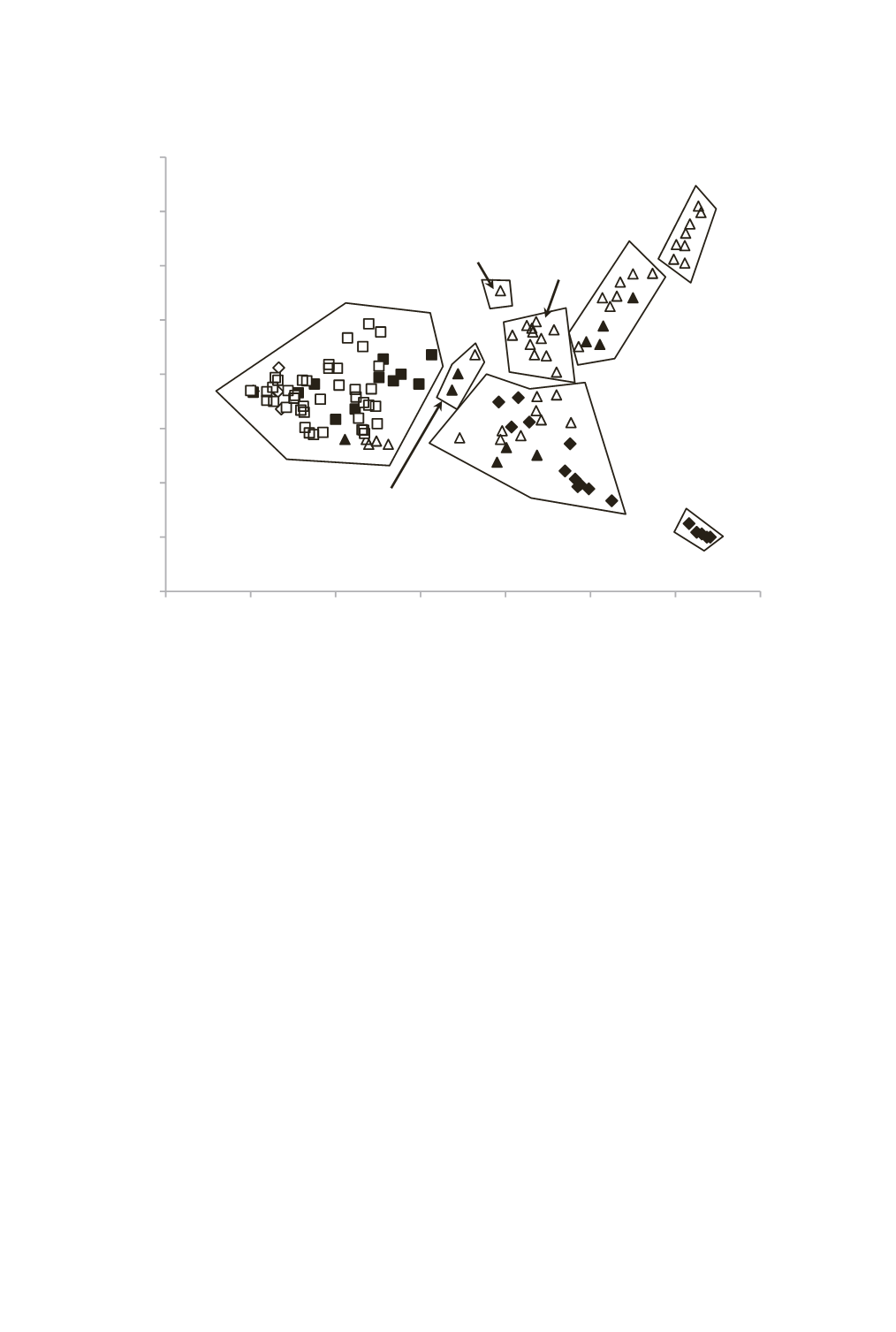
128 Spotted Crake habitat use
©Wildfowl & Wetlands Trust
Wildfowl
(2013) 63: 115–134
Discussion
Large-scale habitat selection
Spotted Crakes were not randomly
distributed across the restoration project
area at Lille Vildmose. Singing males were
consistently associated with areas of peat
extraction where the restoration project had
created a levelled surface with high water
tables and shallow water features that were
retained throughout the summer. The
species was completely absent from the
deep water canal and the raised mire on the
western fringe of the site, the dense tall
willow scrub in the north and was, not
surprisingly, also absent from any of the
arable fields and level fertilised managed
summer grazing areas. The species was
also conspicuously absent from the vast
majority of the deep-ridged peat cuttings,
characterised by deep water interspersed
with drier peat bunds, despite the very high
diversity and densities of other nesting
waterbird species associated with these
Figure 6.
Detrended Correspondence Analysis ordination of 139 1 m × 1 m sampled vegetation
quadrats from each of the three studied management units at Lille Vildmose, Jutland, Denmark summer
2013. Different symbols represent each of the separate management units, diamonds Territory 1,
triangles Territory 2 and squares Territory 3, open symbols represent quadrats outside the areas used by
Spotted Crakes, filled symbols those within the areas used by the radio-tagged birds. DCA axis 1
represents a gradient from tall dense vegetation (low values) to more short and open vegetation (high
values) while axis 2 represents a strong moisture gradient from deepest open water habitats (low values)
to dry grassland (high values).
–100
0
100
200
300
400
500
600
700
–100
0
100
200
300
400
500
600
Detrended correspondence analysis axis 1
Detrended correspondence analysis axis 2
Typha latifolia
shallow water
community
Phragmites
and
Salix
swamp with
Eriophorum
angustifolium
understorey
Pure
Molinia
caerulea
grassland
Juncus effusus
/
Glyeria fluitans
wet acidic
grassland
Dry grassland
Alopecurus aequalis
/
Glyeria fluitans
wet acidic
grassland
Open deeper
water
community
Juncus effusus
/
Salix cinerea
scrub


